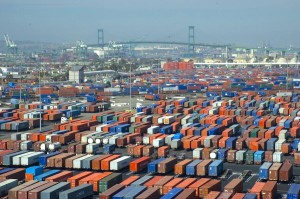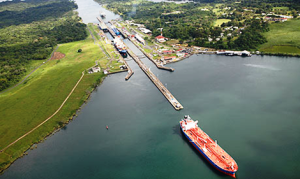After nine months of negotiations and increased gridlock, vessel operations at West Coast maritime ports may be completely shut down in as little as five to ten days, according to a recent article in MarketWatch.
The disputed contract covers 20,000 workers and 30 different ports, so the negotiations could be foreseen to move slowly, but with both sides blaming each other for a cargo slowdown, a lockout seems imminent.
“After three months of union slowdowns, it makes no sense to pay extra for less work,” according to Pacific Maritime Association (PMA) spokesman Wade Gates.
“PMA is leaving ships at sea and claiming there’s no space on the docks, but there are acres of asphalt just waiting for the containers on those ships, and hundreds of longshore workers ready to unload them,” said International Longshore and Warehouse Union (ILWU) International President Robert McEllrath. “The employers are deliberately worsening the existing congestion crisis to gain the upper hand at the bargaining table.” McEllrath claims that the sides are not so far apart, with only a few issues remaining in late-stage negotiations.
The sides certainly still have time to hammer out a deal, and should, as a full shutdown would exponentially exacerbate the costs accrued by the cargo shutdown. According to a study by Jeffrey Werling, the executive director of the University of Maryland’s Inforum, the slowdown has already cost the national economy around a billion dollars and a lockout would cost an estimated $2.5 billion per day. With the U.S.’s GDP at around $17.71 trillion, a 20-day shutdown would cost about 0.3% of annual GDP.
With multiple lockouts and slowdowns in the last 15 years, these West Coast ports have lost market share and have created a dangerous incentive to bypass them altogether. With the Panama Canal set to double its breadth by 2016, many shippers will have a simple alternative to the West Coast ports.
If the two sides can’t work out a deal, the longshore workers and surrounding businesses predicated on their consumer participation are likely to bear the brunt of the losses. The corporations that utilize these ports have options like airfreight, with which they can ship without disrupting much of their business. However, the long-term cost of airfreight is much greater.
[slideshare id=44647463&doc=ericgersterwestcoastportshutdown-150213103107-conversion-gate02]



